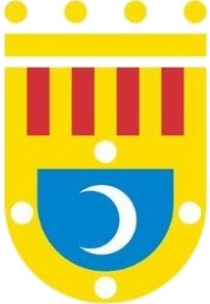The remote origin of what today is Jacarilla can be traced back to the 4th century BC, when an Iberian settlement was located in this place. By those distant dates, this area of the Vega Baja del Segura presented orographic conditions different from the current ones; Jacarilla was on the shore of an immense marsh fed by alluvium from the Vinalopó and the Segura and which extended to the Mediterranean Sea.
FROM SAKARISKERA TO JACARILLA
There is news, from some inscriptions found in 1921 in the Serreta de Alcoy, that at that time there was a large pilgrimage from different places to a spiritual center to make offerings to the goddess of fertility. In the lead plate found there is a list that details the origin of each group of those people, and the last to appear is Sakariskera, which came to mean “the place where the river of sand stops.” The place name will evolve to Xacariella, Hacarilla and, finally, to Jacarilla.
As in all the cases of place names of uncertain origin, also for Jacarilla diverse etymological theories are defended, but the previous one is the one that goes back to a more remote past.
FROM RECONQUEST TO OUR DAYS
After time and reconquered the place from the Moors, the Togores family, according to the Llibre del Repartiments del Rey Jaime I de Aragón, will exercise their undivided dominion for centuries. In the seventeenth century it became independent from Orihuela, and in the nineteenth century, with Francisco Sandoval Melgares, the owner of the land, he obtained his separation from Bigastro.
In 1947, the heir to the Marquis parcelled and proportionally sold to 240 residents of Jacarilla those lands that they themselves worked as sharecroppers, just as their ancestors had always done. After paying seven and a half million pesetas, that vestige of quasi-feudal dependency with medieval roots disappeared in the middle of the 20th century.
In 1899, when the last lord of Jacarilla died, the entire territory was divided equally between his four children. In 1915, one of the heirs sold his properties (about 850 hectares of land among which the town was located) to the Marqués de Fontana, who had been captivated by the beauty of the natural area known as “Vereda de las Palmeras”, for an amount of around one million pesetas.



